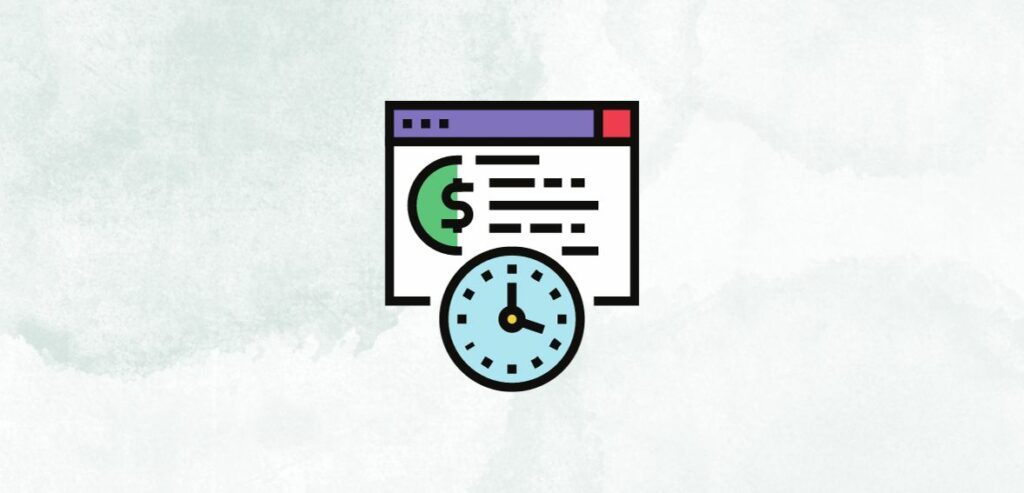When your company needs to make a payment, whether it is by issuing a check, conducting an ACH transfer, or any other form of transaction through your bank, it’s essential to be aware of your bank’s cutoff times. Bank cutoff times are the specific duration during a business day when certain banking activities need to be completed to be processed on time. Businesses must have an understanding of these cutoff times as they directly impact the timing and effectiveness of transactions. Failing to meet a cutoff time can lead to delays, which can affect aspects such, as payroll processing and vendor payments.
These deadlines play a key role in determining how quickly and efficiently your financial transactions are processed. Understanding the importance of these cutoff times goes beyond just simply following rules; Knowing these details allows businesses to plan their financial tasks accordingly, ensuring that funds are available when needed and that transactions go through without hitches. This article aims to provide an understanding of bank cutoff times, including their significance, the benefits they offer, and how they can impact your business activities. By shedding light on these aspects, this article equips you with the knowledge to manage cutoff times and ensure smooth and timely financial transactions for your enterprise.

What Do We Mean By Bank Cutoff Times?
Bank cutoff times are specific deadlines set by banks for processing transactions each business day. If you make a transaction after this deadline, it usually gets processed the next business day. These cutoffs apply to banking activities like wire transfers, check deposits, and electronic transfers. The exact cutoff can differ between banks or even for different types of transactions within the same bank.
Most banks set their cutoff around 2:00 to 11:00 PM local time. It’s worth noting that this is separate from a bank’s regular hours, which might still allow for certain transactions even after the cutoff time. Commercial banks often have different cutoff times for various types of deposits, such as wire transfers, ACH transfers, and checks. These times can also differ for international and domestic deposits. Knowing these cutoffs is essential since they can vary based on your bank and the rules they adhere to.
Here’s a simplified example of how different transactions are processed by a bank, although it can vary:
- In-Person Transactions: If you visit a bank branch and do a transaction with a bank employee, it will be processed the same day if it’s a business day. If it’s a Saturday or Sunday, or any federal holiday, it’ll be done on the next business day.
- Electronic Transactions: Online transactions like transfers or bill payments need to be done by 6:00 PM local time from Monday to Friday, not including bank holidays. Transactions done on weekends or holidays will go through the next business day.
- Mobile Deposits: If you use mobile deposit and do it before 4:00 PM local time on a weekday, the money will usually show up in your account that evening, between 7:00 PM and 10:00 PM. Otherwise, it’ll be processed the next business day. Remember, there might be delays based on the bank’s review.
- Online Loan Payments: Loan payments made through the bank’s online portal need to be completed by 5:00 PM local time on weekdays, except bank holidays, to be considered on time. Payments after this will be processed the next business day. If there’s any issue with your payment, they’ll let you know by email.

Why Do Banks Have Cutoff Time?
Banks set specific cutoff times to streamline their daily financial tasks. This system helps them handle and finalize all money transfers within a single business day efficiently.
By maintaining these cutoff times, banks ensure smooth transactions between parties. This consistency allows senders to verify they have adequate funds before making transfers. For businesses, knowing these cutoff times is crucial. It helps them manage their daily finances effectively and ensures that payments go through without delays. Missing these cutoffs can interrupt a business’s cash flow, so staying informed is key.
Benefits Of Bank Cutoff Time
Banking cutoff times offer several advantages for banks and businesses, enhancing the efficiency and safety of money transactions. Here are two key benefits:
- Better Efficiency: Cutoff times help banks manage their work more smoothly. By setting a clear deadline, they can ensure that all transactions get processed within the same business day, making their operations more efficient and ensuring consistent service.
- Preventing Fraud: These cutoffs give banks a set time to carefully watch transactions for any signs of fraud. This focused monitoring allows for quicker detection and action against any suspicious activities, making transactions more secure.
- Setting Clear Expectations: When banks have specific cutoff times, it helps customers know exactly when their transactions will go through. This clarity allows both businesses and individuals to plan their finances better, avoiding late fees or other penalties.
- Managing Resources Efficiently: Cutoff times also help businesses manage their resources, like staff and equipment. Knowing when transactions will be processed means they can allocate resources more effectively, ensuring nothing gets wasted.
- Reducing Financial Risks: Banks use cutoff times as a tool to manage risks. By setting clear times for when transactions start and finish, they can lower the chances of issues like insufficient funds or bounced checks.
How Does Bank Cutoff Time Impact Businesses?

Bank cutoff times might seem insignificant, but they have a big impact on your business operations. Delays in payments and Fund holding are two of the prominent issues:
Delay in Payments
Missing a bank’s cutoff time can push your transaction to the next business day. Imagine you send money to another bank or pay a bill online late in the day; that payment won’t go through until the next business day. This delay can result in late fees or disrupt cash flow, especially for businesses trying to keep up with payments. Knowing your bank’s cutoff times is essential to avoid these pitfalls.
Moreover, these delays can make banks hold onto your funds longer, affecting your cash flow. This is particularly challenging when other factors, like supply chain issues or higher utility costs, are already squeezing profits.
Holds on Funds
Banks can also put a hold on your deposited funds until transactions clear. Here’s how it works:
- Full Fund Hold: If you deposit money after the cutoff, it won’t clear until the next business day. So, even if it shows up in your account, you can’t use it right away.
- Partial Hold: In this scenario, banks release only part of your deposit immediately. For instance, if you deposit $5,000, they might make $2,000 available right away but hold onto the remaining $3,000 for further processing. This means you’ll have to wait to access the full amount.
Understanding these cutoff times and hold policies can help you manage your finances better and avoid unnecessary delays or complications.
Conclusion
Bank cutoff times are more than just arbitrary deadlines; they are crucial markers that dictate the flow and efficiency of financial transactions for businesses. By understanding and adhering to these cutoff times, businesses can ensure timely payments, maintain a healthy cash flow, and avoid potential pitfalls like late fees or hold on funds.
Additionally, being informed about these cutoffs allows businesses to manage their resources more effectively and mitigate risks associated with financial transactions. In a world where timing can significantly impact operations and profitability, having a clear understanding of bank cutoff times is indispensable for any business aiming for smooth and efficient financial management.
Frequently Asked Questions
Q; What is the significance of the cut-off time in banking?
The cut-off time in banking marks the deadline for same-day deposit credits. Any deposits made after this time will be processed on the following business day. Understanding your bank's cut-off time is crucial as it determines when transactions become official.
Q: Why does the cut-off time matter for financial reporting?
The cut-off time plays a vital role in maintaining the accuracy of a company's financial records. By setting a specific cut-off time, banks can ensure that all transactions are recorded within the correct accounting period, thereby supporting consistent and reliable financial reporting.
Q: How do bank cutoff times impact business operations?
Bank cutoff times play a crucial role in business operations by influencing the timing and efficiency of financial transactions. Missing a cutoff time can lead to delays, affecting aspects like payroll processing and vendor payments. It can also result in holds on deposited funds, impacting cash flow. Therefore, businesses need to be aware of these cutoff times to manage their financial tasks effectively.


